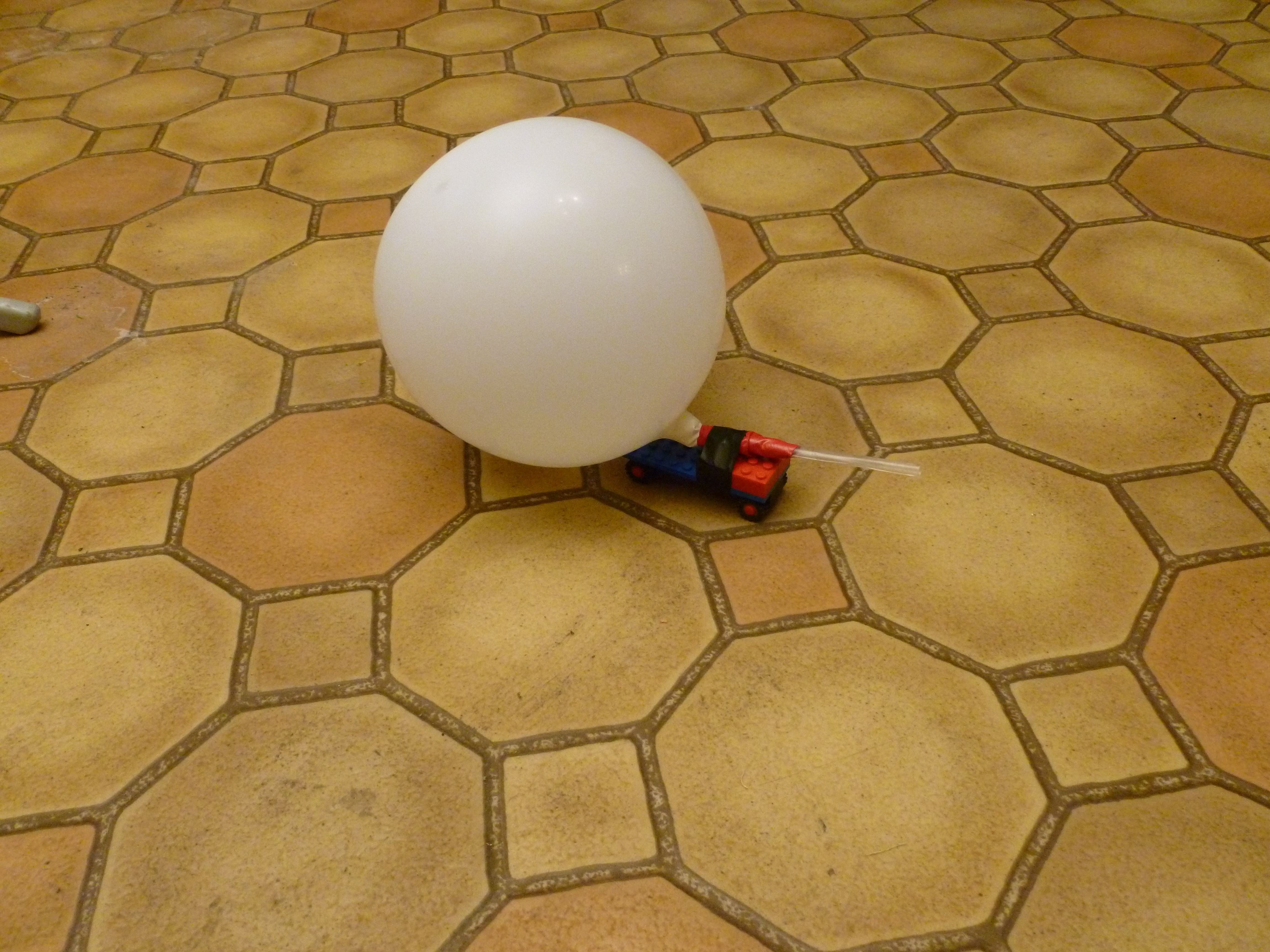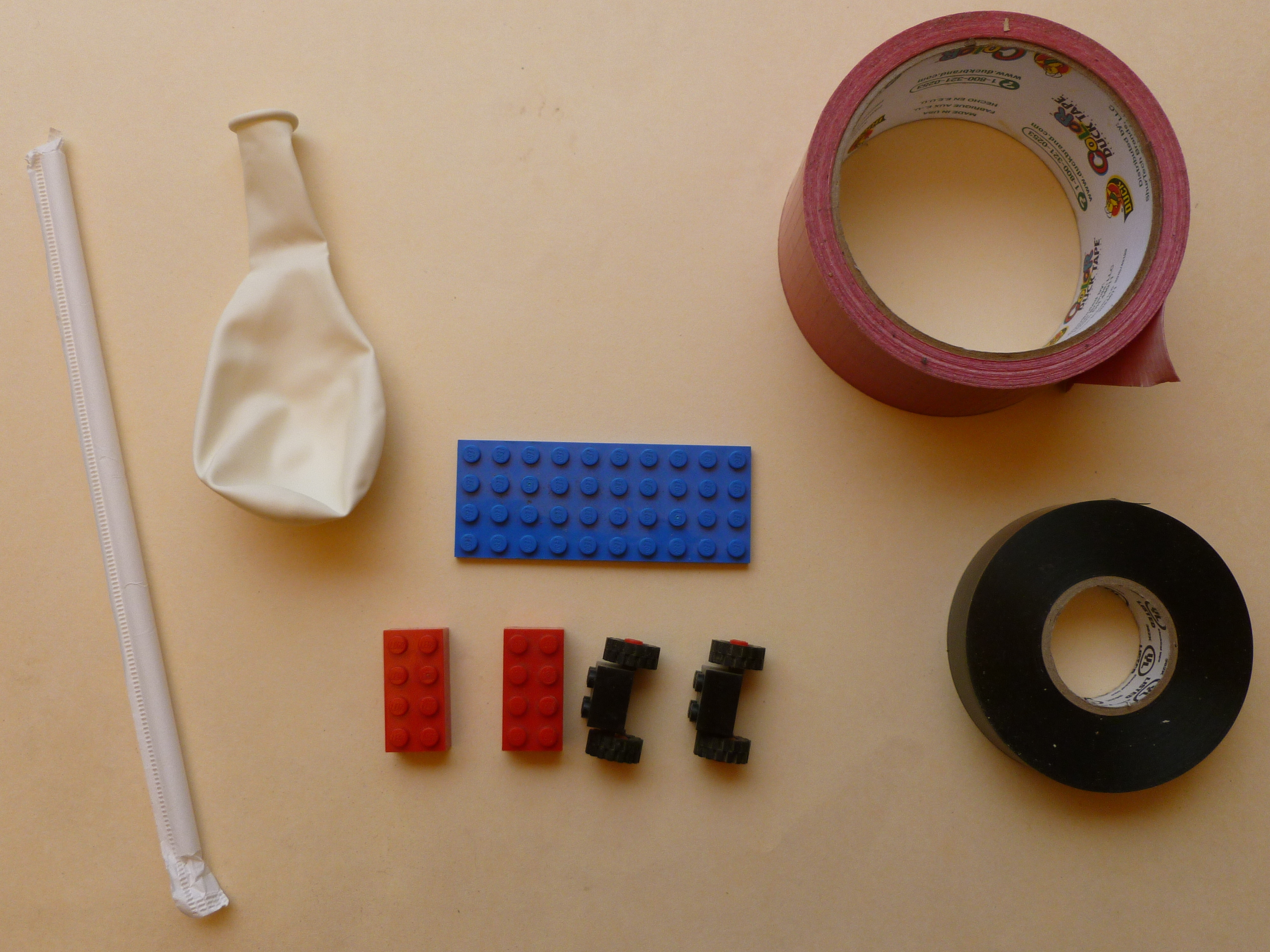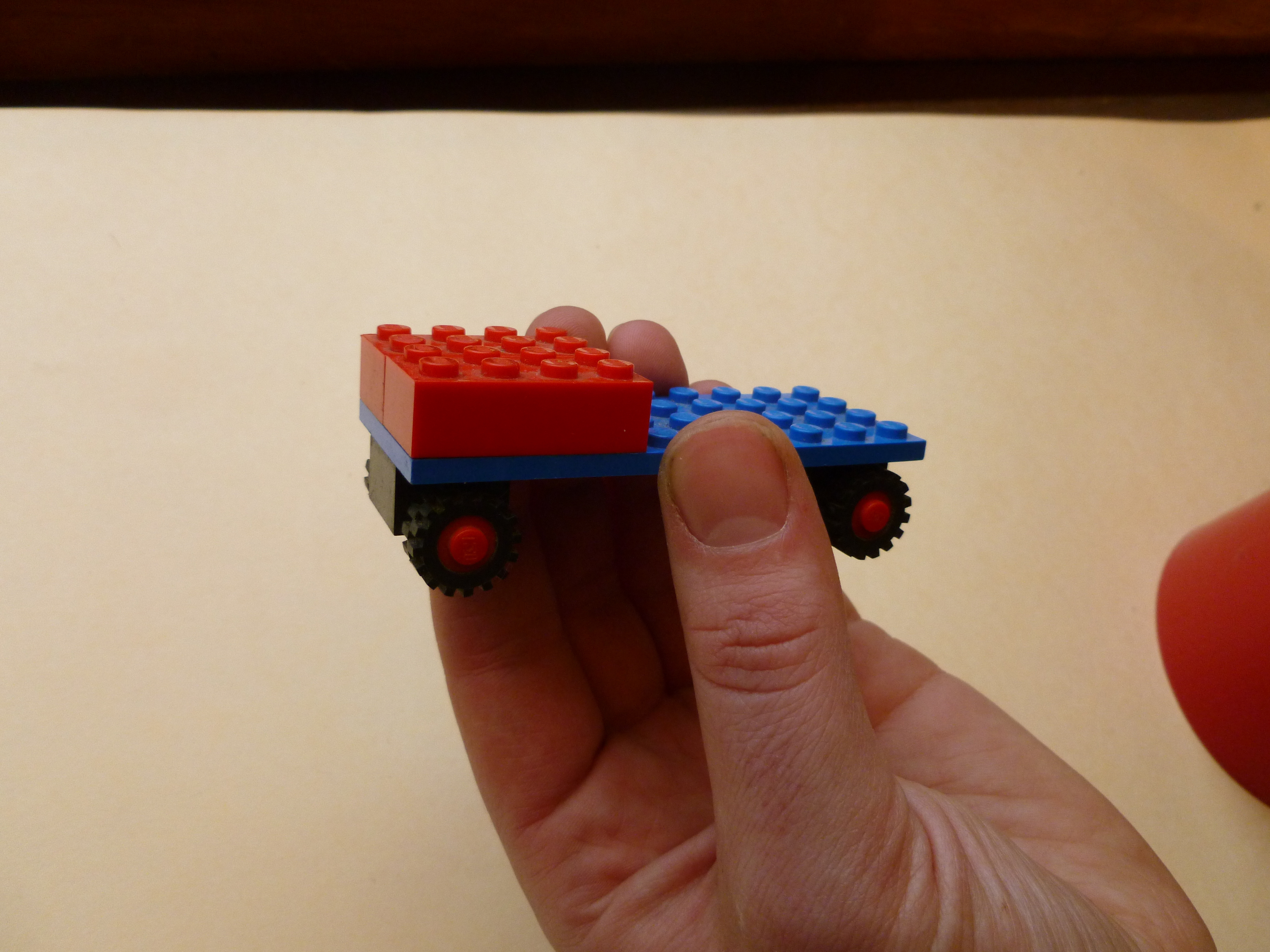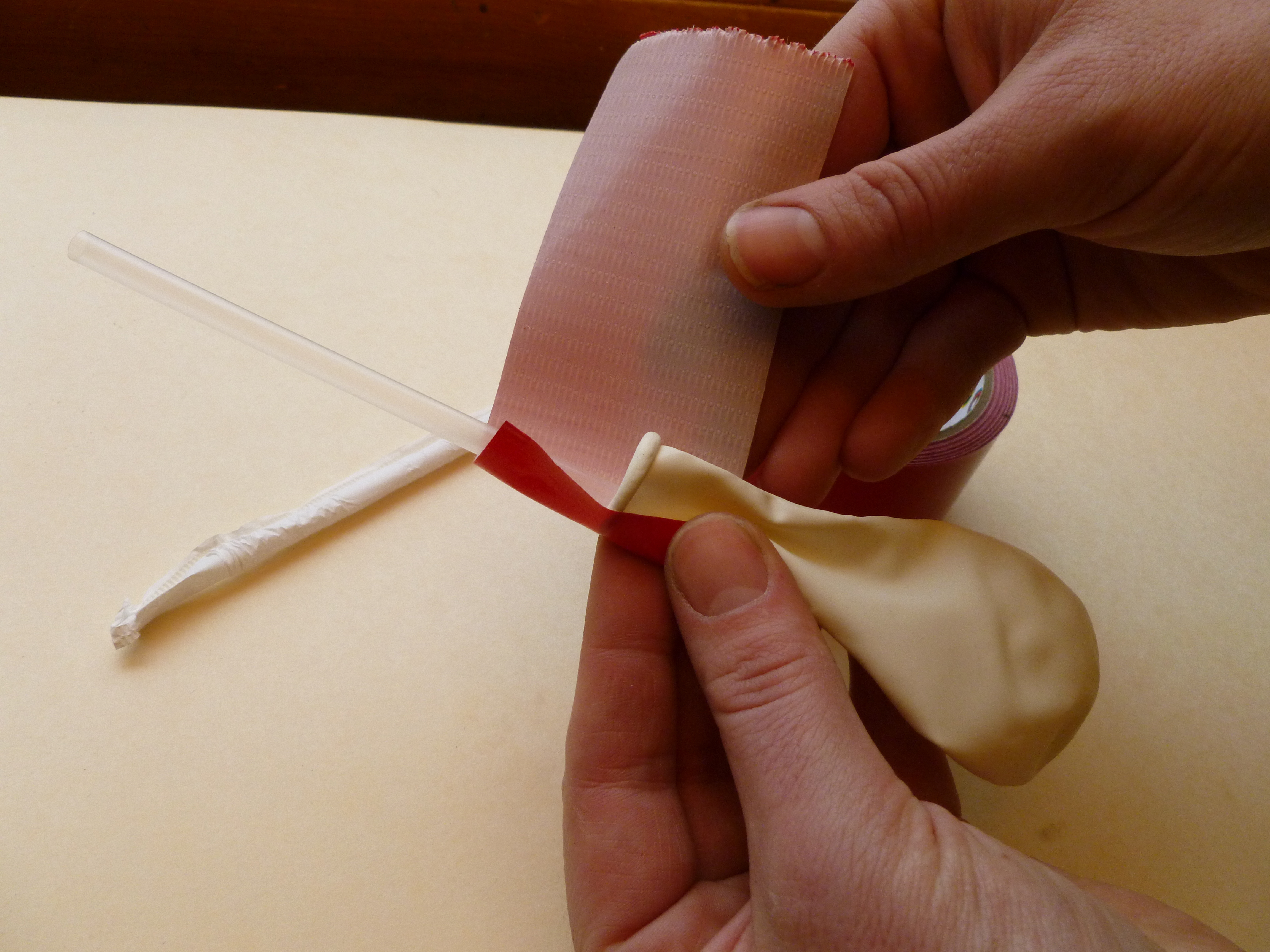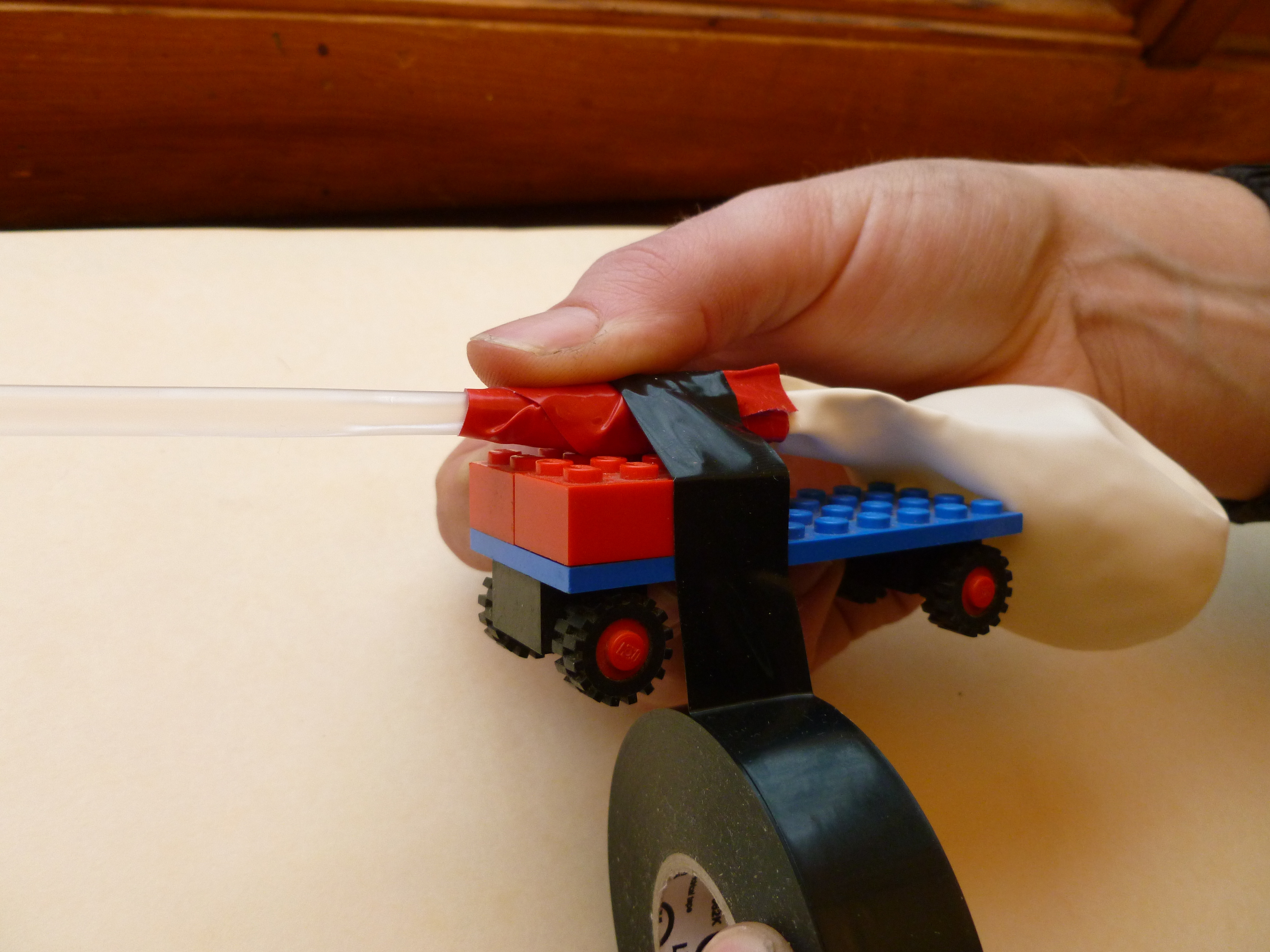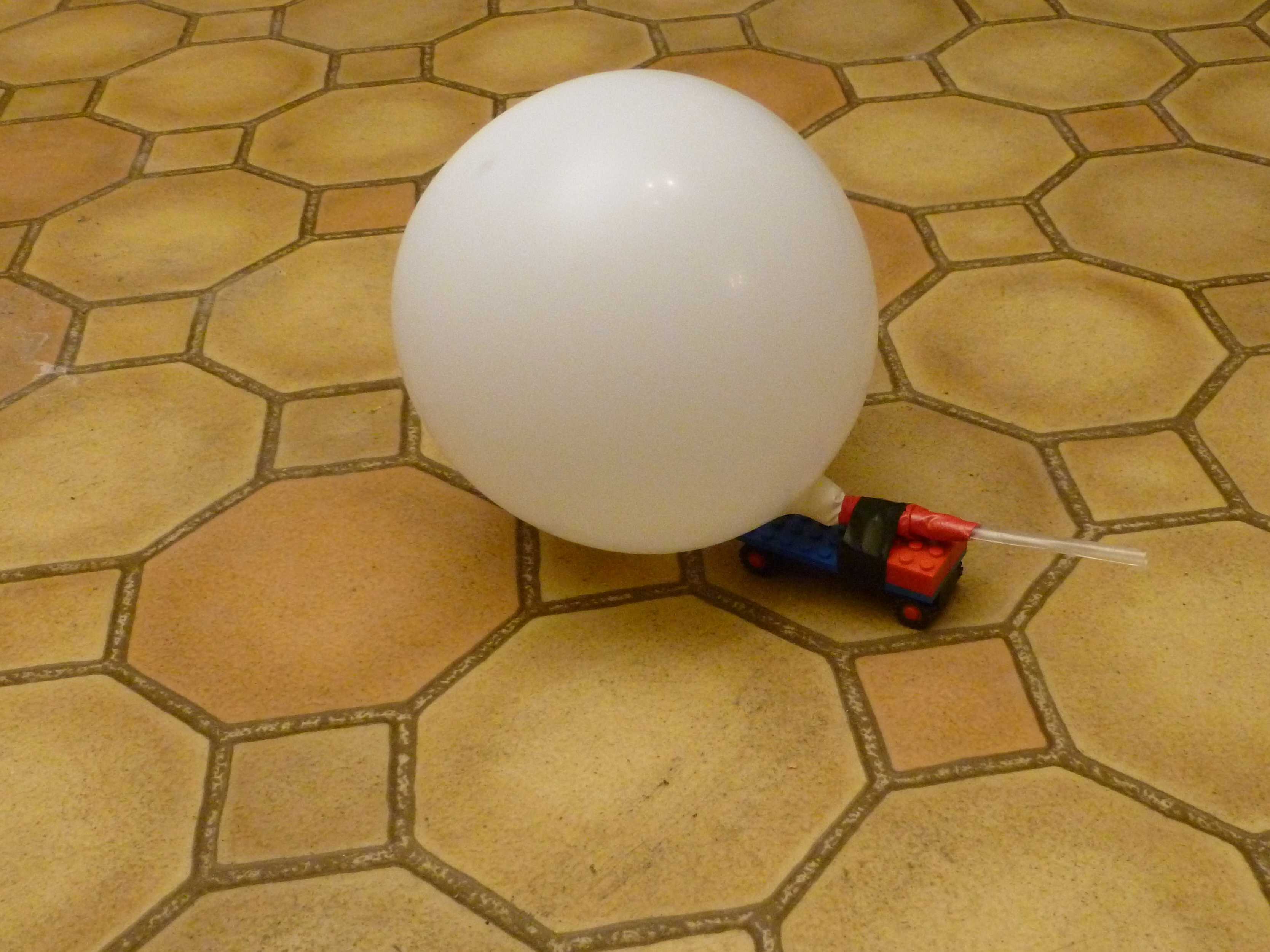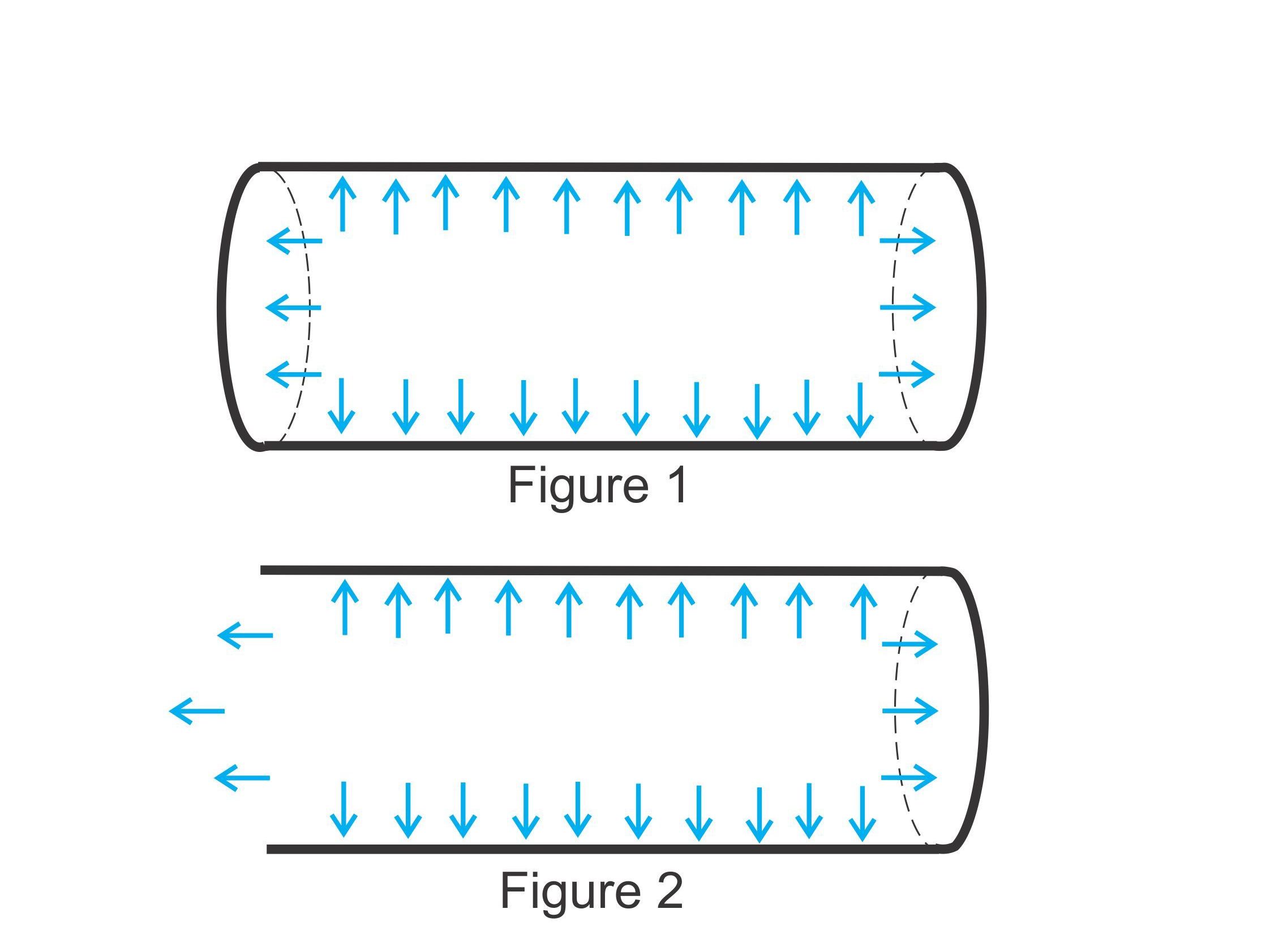This toy car, made with LEGOS and powered by a blown-up balloon, is super simple and fun to make and fun to play with. It is also educational since it uses the principle of rocket propulsion. In addition to showing how to make the rocket-propelled toy car, this guide also includes a short and easy-to-understand explanation how rocket propulsion works. This explanation of rocket propulsion is intuitive and uses the very basic scientific principle of unbalanced forces acting on an object. The video
gives more details on the theory behind rocket propulsion. I have used this explanation in several of my Workshop Articles in Boys’ Quest and Fun For Kidz magazines as well as in my book Snowball Launchers, Giant-Pumpkin Growers and Other Cool Contraptions which are all aimed at children. I have received numerous positive comments on this explanation.


